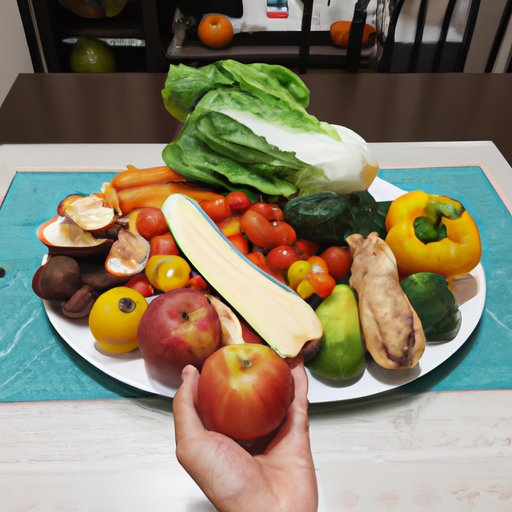Introduction
The BRAT diet, which stands for Bananas, Rice, Applesauce, and Toast, is often recommended for people who are dealing with digestive upset, such as diarrhea or vomiting. It is a low-fiber, bland diet that can help to settle an upset stomach and provide some relief from digestive symptoms. However, it is important to know what to eat after the BRAT diet so that you can restore your body’s nutrient needs and start to feel better.
Reintroducing Foods Gradually
When reintroducing foods after the BRAT diet, it is important to do so gradually. Start by introducing low-fiber, easily digested foods that are gentle on the digestive system. Some examples of these types of foods include oatmeal, boiled potatoes, cooked carrots, plain white rice, skinless chicken, and eggs. Avoid eating too much at once, as this can cause a flare-up of digestive symptoms.

Eating Plenty of Fruits and Vegetables
Fruits and vegetables are packed with essential vitamins, minerals, and antioxidants, making them an important part of any diet. Eating plenty of fruits and vegetables helps to boost immunity, reduce inflammation, and improve overall health. Good options to include in your diet after the BRAT diet include apples, bananas, oranges, pears, spinach, kale, broccoli, bell peppers, squash, sweet potatoes, and carrots.
Incorporating Healthy Fats
Healthy fats, such as those found in avocados, nuts, and seeds, are an important part of any diet. They provide essential fatty acids, help to keep you full, and can even help to boost your mood. Healthy fat sources include olive oil, coconut oil, nut butters, avocado, nuts, and seeds. To add healthy fats to meals, try adding a tablespoon of olive oil to salads or cooking with coconut oil.
Choosing Whole Grains
Whole grains are an excellent source of fiber, vitamins, minerals, and other nutrients. Eating plenty of whole grains can help to reduce cholesterol levels, improve digestion, and promote weight loss. Examples of whole grains to include in your diet after the BRAT diet include brown rice, quinoa, oats, barley, bulgur, and farro.
Eating Lean Protein Sources
Protein is an important part of any diet, and lean protein sources are particularly beneficial. Examples of lean protein sources include skinless chicken, fish, tofu, eggs, beans, and lentils. To prepare lean protein sources, try grilling, baking, or poaching instead of frying.

Replacing Processed Foods with Whole Foods
Processed foods are often high in sugar, sodium, and unhealthy fats, and can be difficult for the digestive system to process. Instead of relying on processed foods, focus on eating plenty of whole foods, such as fruits, vegetables, nuts, seeds, legumes, and whole grains. These types of foods are naturally rich in essential nutrients and can help to support a healthy digestive system.
Sticking to Regular Meal Times
Eating at regular times can help to regulate your appetite and keep your digestive system functioning properly. Aim to eat three meals a day, and if necessary, add in two snacks between meals. Try to space out meals evenly throughout the day and avoid going long periods of time without eating.
Conclusion
Following the BRAT diet can help to provide some relief from digestive symptoms, but it is important to know what to eat after the BRAT diet. Reintroduce foods gradually, focus on eating plenty of fruits and vegetables, incorporate healthy fats, choose whole grains, eat lean protein sources, replace processed foods with whole foods, and stick to regular meal times. Following these tips can help to support a healthy digestive system and ensure you are getting all the essential nutrients your body needs.
(Note: Is this article not meeting your expectations? Do you have knowledge or insights to share? Unlock new opportunities and expand your reach by joining our authors team. Click Registration to join us and share your expertise with our readers.)
